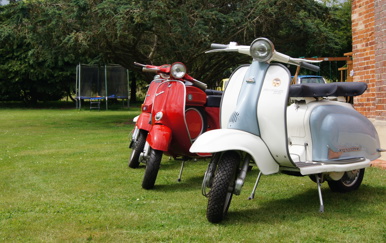Vespa is about to celebrate its 80th anniversary. The world’s oldest and best known scooter brand was officially launched in the spring of 1946 and the iconic Italian marque has just announced plans to celebrate that 80th milestone in Rome between the 25th and the 28th of June next year in what is set to be the biggest party in the history of this legendary brand with tens of thousands of Vespa enthusiasts expected to descend from all over the world.
So, there’s probably no better time to look back on the history of Vespa, reveal how it all came about, revisit what makes the brand so special – and uncover a few surprises along the way!
When was Vespa founded?
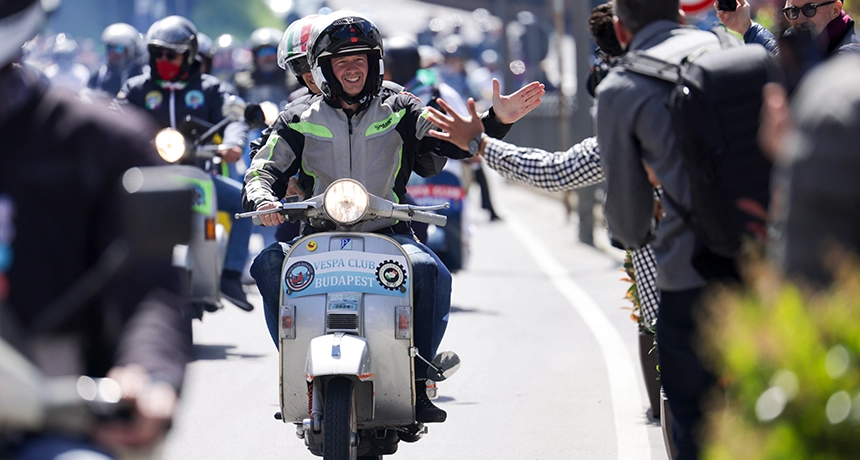
Conceived as a one-off model created by a designer who disliked conventional motorcycles, the very first Vespa dates back to April 23, 1946, when its original patents were filed. That radical machine proved so successful it not only spawned a whole brand but created a new class of vehicle – scooters.
In the process Vespa also became a hugely successful commercial entity, which it remains to this day (over 1.8million Vespas have been produced in the last decade alone) and also a cultural and fashion icon no other powered two-wheeler comes close to.
Like many of its modern contemporaries, such as Honda, Vespa was created out of the unique combination of circumstances at the end of WW2.
Italian manufacturing company Piaggio had primarily been an aircraft producer but with the cessation of hostilities and with its Pontedera bomber factory destroyed, aircraft production restricted by the Allies, a crippled Italian economy, Italian roads proving largely unfit for cars and a population demanding cheap transport, Piaggio instead, like many others, decided to produce affordable powered two-wheelers.
The first Vespa prototype
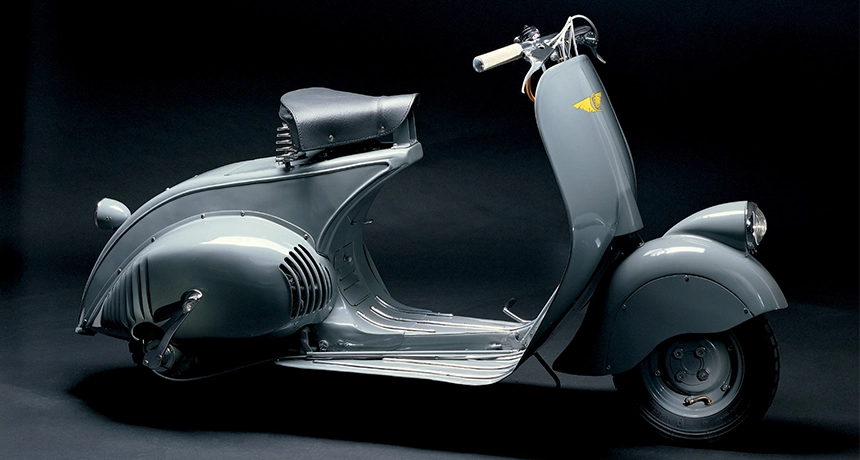
A first prototype was developed as early as 1944 by Piaggio engineers Renzo Spolti and Vittorio Casini, which featured small wheels and bodywork enclosing the engine. But boss Enrico Piaggio was unconvinced by its tall central section and commissioned aeronautical engineer Corradino D’Ascanio, who famously hated conventional motorcycles, to improve on it.
The result, with its 98cc two-stroke, single cylinder engine mounted beside the rear wheel to enable a ‘step-thru’ design which eliminated the dirt associated with a traditional motorcycle’s drive chain and also equipped with an easily fitted spare wheel, immediately impressed Piaggio who is reported to have exclaimed ‘Sembra una vespa!’ – ‘It looks like a wasp!’ The scooter – and Vespa – were born.
Vespa's early success
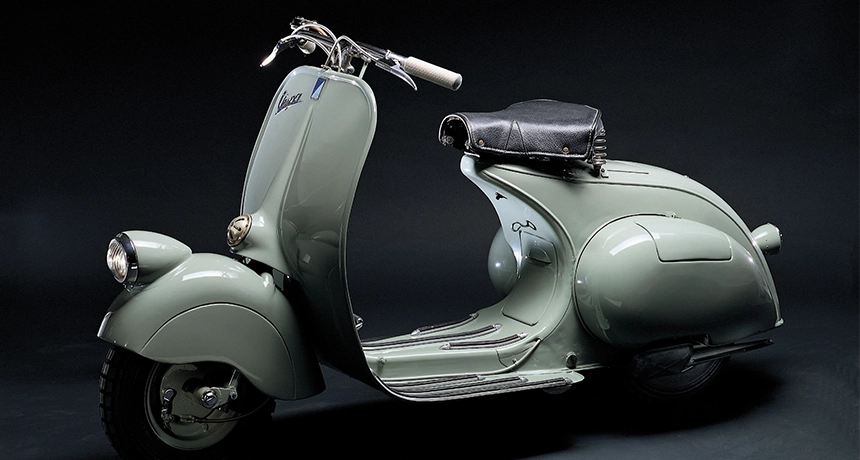
Officially unveiled at the 1946 Milan Fair initial sales of the Vespa 98, as that first model was called, were actually quite slow. However, when an option to pay by instalments was introduced, things took off. Over 2,500 were sold in 1947, 10,000 in 1948, 20,000 in 1949 and more than 60,000 in 1950.
1948 also saw a second Vespa model, a 125 also gaining rear suspension, which helped fuel sales success and Vespa as a brand – and two-wheeled icon – was on its way.
A significant factor behind Vespa’s early success was Enrico Piaggio’s savvy in creating publicity and interest in the new machine. Cooperation with the producers of 1952 film Roman Holiday, for example, resulted in Audrey Hepburn and Gregory riding a Vespa through Rome in the hit movie – invaluable publicity which was credited as resulting in a 100,000 boost in sales.
Vespa clubs also started popping up throughout Europe, attracting two-wheel fans who wanted an alternative to conventional motorcycles. By 1952 worldwide membership had surpassed 50,000.
Early developments of the Vespa

Nor was the Vespa yet the finished article in terms of the scooter layout we are so familiar with today. It wasn’t until 1955, for example, that the 150 GS introduced the faired-in headlamp unit and 10-inch tyres which are such a part of its modern silhouette. It was, however, already enough for it to be identified as an affordable, fashionable ‘freedom machine’ and a stylish alternative to conventional, ‘grubby’ motorcycles.
As a result, by 1956 Vespas were pretty much the coolest thing on two wheels. John Wayne and Marlon Brando were pictured aboard them as, later, was Charlton Heston (in between takes while filming Ben Hur in 1959). 1956 also saw the one millionth Vespa built. In fact, by the mid-1950s demand was such that Vespas were being manufactured not just in Italy but also under licence in German, France, Spain and, in the UK, by Douglas in Bristol.
Of course, the Vespa story wasn’t all incessant growth and popularity. In the early 1960s, the emergence of cheap, small cars such as the Mini and Fiat 500, drove some rival scooter firms to the wall. Piaggio, which in 1959 came under the ownership of Fiat, had the financial muscle to survive. In 1960, Vespa production reached 2 million, before surpassing 4 million in 1970.
The start of the Vespa PX
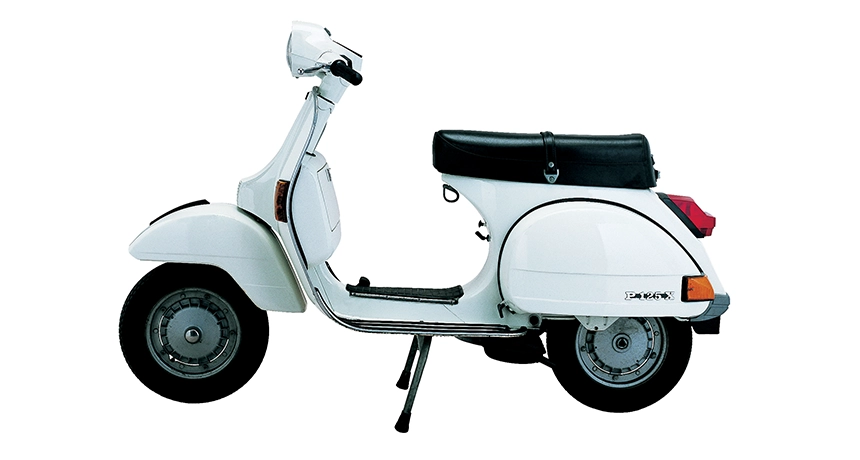
Vespa also had the design and marketing savvy to stay on top. In the 1970s, after Lambretta, who’s older, more robust designs had long been viewed as less fashionable, ‘working man’ machines, had gone out of business, Vespa came up with the PX which, by being a larger machine appealing to enthusiasts rather than just commuters, and also being available in a big variety of displacements (125cc, 150, 160, 180 and 200) also had a broad appeal and became a big success. Over 3 million were sold over the course of the PX’s lifetime.
Vespa’s commuter range of smaller 50s and 125s was also given a huge fillip with the successful launch of the both two and four-stroke powered ET2/ET4 family in 1996.
The Vespa GT
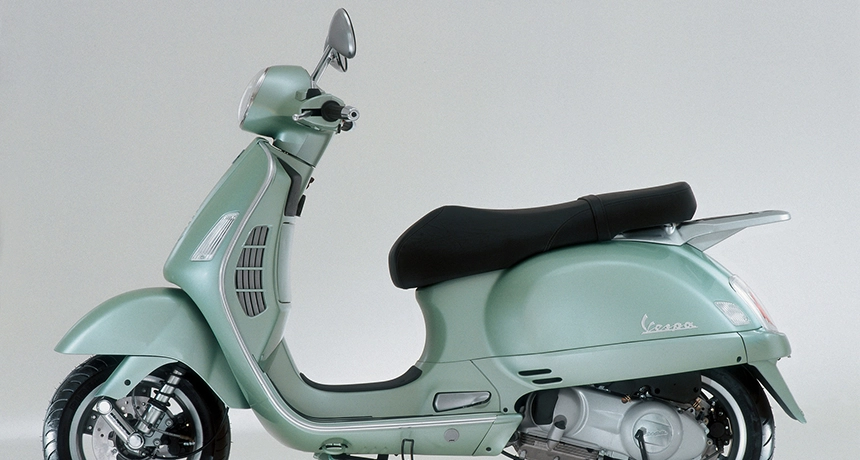
While after weathering another financial crisis in the early 2000s, Vespa had another masterstroke by launching, in 2003, its ‘Granturismo’ (GT) in both 125 and 200cc forms. This machine delivered a brilliant blend of modern technology and luxury along with retro-inspired styling that paid homage to historic Vespas of the past.
As such it appealed to both fashion-conscious commuters and historic enthusiasts and so became a huge sales hit, cementing Vespa’s success and paving the way for a whole series of GT spin-offs and derivatives which form the backbone of brand’s range to this day.
In 2005 a GTS250 was added, with an enlarged version of the GT’s pioneering liquid-cooled, four-valve, four-stroke engine, so becoming the fastest, most powerful Vespa ever. While this in turn was joined by the GTS300 in 2011, which, for 2021 was updated again to meet Euro5.
Vespa today

The very latest versions, meanwhile, now available in 125 and 310cc forms, alongside the Primavera, remain the most desirable (and fashionable) scooters of all, not a bad accomplishment considering Vespa’s origins as a budget, low powered utility vehicle born out of the ruins of WW2…
Happy 80th birthday, Vespa, you deserve it!





